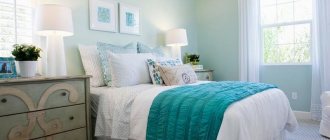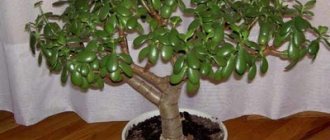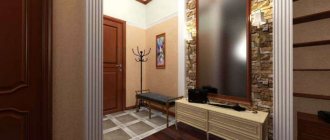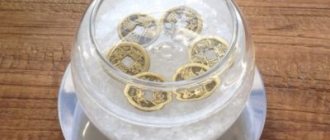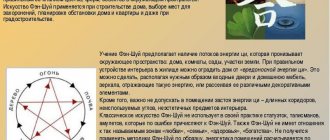Fence and gate according to Feng Shui
If you want a fence and gate around your home, check out these 12 tips for creating positive Qi Sheng in your property.
- Do you need a fence?
No fence is needed if the neighbors do not have one, since its presence can cause resentment in them and, as a result, envy and other negative emotions. This energy will enter your home.
- Maintain the same fence height throughout the property.
Ideally, it should be level, that is, built on a level area. If this is not possible, try to avoid sudden drops in altitude.
The worst feng shui is a fluctuation in height where the fence meets the gate. That is, one side of the gate should in no case be lower or higher than the other, otherwise health problems may arise.
- The ideal fence is durable.
A good fence will prevent positive energy from leaving the territory of the house.
This advice can be ignored for safety reasons. For example, if you are friendly to your neighbors, they may protect your territory behind a transparent fence.
- Choose building material from the direction of the light.
South, southwest, northeast - brick, reinforced concrete.
West, northwest, north - any metal.
East, southeast - forest.
- Beware of sharp, jagged fence ends and gates.
Especially if they are looking at your website. Pointed arrows are bad feng shui.
The arrows can be directed upward, but only if their sharp ends are not visible from the height of the house. It is completely unacceptable to direct them towards neighbors, because this causes them harm, which can return like a boomerang. For this reason, barbed wire should not be used.
- It is unacceptable to use the shape of crosses, pointed rhombuses and downward arrows in the decoration of fences and gates.
This is bad feng shui, especially if the fence and gate are wooden. They generate sha qi energy.
- Choose natural colors.
Aggressive colors are highly undesirable. Depending on the direction, it is recommended to use different colors:
- south is red,
- southwest, northeast - brown,
- west, northwest - white, gold, silver,
- north - black, blue,
- east, southeast - green.
If, in principle, only one color is used, then choose the one that matches the homeowner’s element.
- The fence should not exceed the height of the house.
Don't make the fence too high, otherwise the energy will stagnate and turn into qi.
- It is advisable to make the supporting posts of fences and gates round and as wide as possible.
the presence of rounded ornaments allows you to get along well with neighbors and family members.
The size of the pillars will give a feeling of security, and plants planted next to them will enhance this effect.
- Gates cannot be placed in front of the front door of the house itself.
Ideally, they should be located at an angle from the front door.
- The main road should not go towards the gate.
If it is not possible to move the gate to another position, place it at an angle.
- Install fences and gates as far away from the road as possible.
Relevant for those who have a highway or just a road near a fence and gate, along which many cars or many people often pass.
Ideally, there should be a decent distance between the fence and the road and green area with trees.
Interested in solving your problem? Seek expert advice with our free Q&A service.
What trees to plant along the fence
Trees for planting on the outside of the fence
Trees on the outside of the street, in addition to their aesthetic function, act as a kind of filter that traps street dust and exhaust gases. For the outside of the fence, trees that can withstand pruning well and are not too valuable or rare are suitable, this will help avoid vandalism. In addition, you need to choose plants that are unpretentious and resistant to frost, drought and other unfavorable conditions. The following are most suitable for these purposes:
- small-leaved elm
- common elm
- Rowan
- river maple
- Tatarian maple
Common elm
In the wild, the common elm is distributed almost everywhere in deciduous forests. It is found in the European part, in Siberia, the Caucasus, and the Baltic states. In Kazakhstan. The tree grows up to 25 meters in height. The plant is shade-tolerant and drought-resistant.
Elm has been used in landscaping for a very long time, due to the fact that it not only tolerates shearing well, but also holds its given shape well. Has many decorative forms:
- silver-motley
- golden-variegated
- red
The disadvantages of elm plantings include their demands on soil fertility. On poor soils, the growth of these trees slows down. In addition, elms can attract unwanted pests and be actively damaged by them. An undoubted advantage is that the common elm lives for a very long time, up to 200-300 years.
Conifers for the inside of the fence
On the inside of the fence, you can plant primarily coniferous trees with slow growth and with decorative needles and crown. In addition to being decorative, coniferous trees purify the air and emit phytoncides that are beneficial to health. In the summer, bright annual flowers can be planted near the plantings to create a contrast with the dark needles.
Suitable for planting near the fence on the inside:
- low-growing species of prickly spruce
- medium-sized species of common spruce
- decorative types of spruce
Norway spruce Acrocona
This species grows no more than 8 cm per year, an adult plant is no more than 3.0 m in height. The crown is conical, with a wide base up to 4.0 m. needles of rich green color. Young pink cones make the trees elegant and attractive. This species does not tolerate dry soils with high salinity.
In addition to spruce trees, low-growing thujas and pines can be grown along the fence. larches. Despite the variety of species and varieties of coniferous and deciduous trees, most property owners when decorating fences give preference to unpretentious shrubs.
Fence and gate according to Feng Shui
Fence and gate according to Feng Shui
Feng Shui does not divide the objects and elements of space around us into important and insignificant; everything is interconnected and has meaning. So, for the well-being of a house, not only its internal structure is important, but also the site itself on which it stands, what is located on the site and surrounds the house, transport exchanges nearby and, of course, the fence and gate. By defining the boundaries of the site and creating obstacles, thereby directing the flow of chi energy, they are an important element that makes a significant contribution to the overall feng shui of the house.
It’s better, of course, when deciding to install a fence on your property, to contact a specialist, a Feng Shui consultant. He will not only be able to answer what shape, color and material it should be, based on your personal energy characteristics, which will already play an important role. But it also calculates the location of gates and entry gates based on the actual area in which the house is located, the homeowner's favorable directions, current periods of good fortune, and other important energetic characteristics that will further help attract and retain the flow of favorable chi for the success and well-being of the entire family. Including making a calculation of the most favorable day for their installation.
Feng Shui recommendations for fences and gates
However, Feng Shui still has some basic recommendations in this regard, as a result of which it can already give a positive result. So, when choosing a color, it is advisable to give preference to natural colors that are not too bright and flashy: green, brown, sand, terracotta, blue, gray and even black. Although, in this matter, some craftsmen recommend choosing the color of gates and doors depending on the direction of light in which they fall, in order to support them with the appropriate element.
When choosing the material from which the fence will be made, it is better to focus on its favorable element. To do this (who is not yet in the subject), you need to draw up your own Ba-Tzu chart, which will give an idea of the Personal Element of the personality and the elements that favor it. Therefore, proponents of metal should use it as a fence material. The favorable element of which is a tree - you can put up a wooden fence or use such a dense bush. And for the element Earth, stone should be used in the design of the fence. The question immediately arises: what should those for whom the favorable elements are Fire or Water do? These people must use the materials of the elements that support them in accordance with the element generation circle. For the verse, fire will be wood, and for water, metal.
Shrubs
And yet, most gardeners strive to decorate fences with more “solid” plants. For example, bushes can be used to camouflage an inconspicuous fence and reliably isolate oneself from neighbors. They are easy to care for. As a rule, they do not entwine the fence and do not spontaneously grow throughout the area.
What bushes are best to plant along the fence? Among the most popular is derain. It has an unusually interesting color with a silvery touch. And if you place low conifers nearby, the composition will turn out to be very interesting.
Derain is easy to cut and shape. It forms perfectly and quickly forms reliable protection against dust.
If you plant a seedling in the spring, then by the beginning of autumn it will be a meter tall. Many are attracted by such a new settler, but we must keep in mind that the derain needs a decent living space. Therefore, if you want to see more different bushes along the fence, you need to take a closer look at other species.
A good idea is to plant Thunberg barberry along the fence. These bushes have a beautiful spherical shape and reach a height of 90 cm. The matte leaves acquire a red-yellow hue with the onset of autumn. The fence looks very impressive at this time.
When planting, you should take into account that barberry does not like shaded places and does not react well to cold northern winds, so it is better to place it on the western or southern side of the fence. But gardeners will have no problems with watering: rainwater is enough for barberry.
Derain and barberry do not tolerate proximity to each other, since they have different requirements for the composition of the soil and the amount of moisture. Some of these bushes will not demonstrate their best decorative qualities.
What’s wrong with spirea, which is also called viburnum-leaved vesicle? It also grows quickly; literally a few months after planting, the bushes, strewn with luscious foliage, form a full-fledged hedge.
But to complete the picture, the spirea definitely needs to be cut so that it is not shapeless.
Take a closer look at such famous shrubs as lilac, hawthorn, elderberry, and chokeberry. All of these plants are fast-growing and can hide a fence in a short time. You can plant them in groups, with lower, trimmed bushes in front of them. Very original options can come out.
Well, if the owners want to combine business with pleasure, then they can plant berry bushes along the fence. Here you have a fence and an annual harvest of raspberries, currants, gooseberries, and rose hips.
Very important! Shrubs should not be placed close to the fence. When planting, dig holes at a distance of 1-2 meters
The usual picture: in most summer cottages, fruit trees grow along the fences, performing a double function: they serve as a fence and regularly bear fruit. However, recently, summer residents have been thinking not only about benefits, but also about beauty, and are striving to surround their properties with ornamental trees. Luxurious maples, chestnuts, modest willows, birches, and lindens are planted.
But coniferous trees, especially spruce, can probably be called gardeners’ favorites. However, by doing so, summer residents are restoring the old tradition of decorating their farmsteads with conifers.
This should not be done spontaneously. In order for a composition of young Christmas trees to be truly beautiful, you need to plant them at a distance of about 30 cm and monitor their development, constantly cutting them in width and height.
What types of decorative fences there are - original and different - can be found in our article.
Feng Shui fence color
Feng Shui garden fence
Left: The fence is complemented by a wavy hedge that is good for qi.
Feng Shui Garden Fence A skeptic may consider the rules of Feng Shui to be ancient Chinese superstitions that do not deserve serious consideration in the 21st century. But there is no need to rush into such assessments. The rules of Feng Shui make you look at the garden with different eyes, help make it more comfortable, protected from winds and other misfortunes, overcome monotony and routine, and achieve beauty and harmony around you.
When designing a property boundary according to Feng Shui rules, several aspects should be taken into account. A white wall three meters high will alienate your neighbors - such extremes are best avoided. It is also important to consider the views your site offers of your surroundings. A beautiful tree, a pleasant landscape that we can admire from our site, have a beneficial effect and help create an abundance of qi - healthy life energy, which is believed to wash every corner of the Universe.
Of course, the life force qi that comes into your area can also come from places with bad energy, such as a cemetery. First, determine what chi is reaching the garden on each side and how you want to change it if necessary. The height and design of the fence do not have to be the same along the entire length; they can vary. Both from an aesthetic point of view and according to Feng Shui, the height and thickness of the fence should be proportional to the size of the house.
If you want to maintain good qi without affecting it too much, use lattice or mesh fencing such as trellises with climbing plants, open enclosures such as a picket fence, or scattered hedges. A long and monotonous fence looks dull and monotonous, and the qi flows through it too quickly. You can break a long fence line by combining various building materials - natural stone, brick, wood. The main thing in this case is to adhere to a uniform style for the entire site.
Try to avoid straight lines at the top of the fence. Trim the hedge into a rounded shape or install a fence that looks like a wreath or wave overhead. If the line is straight and stiff, soften it with climbing plants. This method is especially good on the western side, where the qi should not be provoked.
If you need to slow down the chi (for example, to reduce the influence of a straight road bordering a section of straight road), use taller, denser fences, or both. A brick wall, a massive fence or a thick hedge will do.
Which color should I choose?
There are 213 colors of corrugated sheets
When choosing corrugated sheeting, they start, first of all, from the goal and task - what will be made of it.
Roofing and fence require different thicknesses of metal and the type of profile for them will also be different. But the choice of corrugated sheet color is no less important.
Firstly, the color coating changes the quality characteristics of the corrugated sheet. Due to the fact that the coating comes in different thicknesses and structures and is made with different paints, the service life of the material varies.
A fence made of unpainted galvanized corrugated sheets is less durable than one made of polymer-coated corrugated sheets.
Secondly, the aesthetic appearance of the house, site, and the entire ensemble as a whole depends on the design of the fence. By choosing the wrong color of corrugated board for a fence, you can “kill” the entire landscape design. Or you can make the house sparkle and look much more respectable.
How to choose a fence color: 7 rules
You can easily choose the color of corrugated board for a fence if you know simple rules.
- The main rule: the color of the roof matches the façade of the house, and the color of the fence matches the roof. It can also be used for the building as a whole. But here a lot depends on the taste of the owner. For example, today the Mediterranean style with light pastel colors is in fashion. In this case, a fence made of light gray corrugated sheets will look very harmonious with a bright blue metal roof.
- Customer's desire. What does he strive for: to surprise, to distinguish himself from his neighbors, or to do “like everyone else”? Each task has its own shade.
- If the fence posts are stone, the color choice is usually limited to chocolate brown or beige. It turns out very elegant.
- If the yard is small, then a fence made of gray corrugated board will help to visually enlarge the space.
- If you want security, and the size of the yard differs in scale, then feel free to choose a dark shade of corrugated sheet.
- If the house is lined with wild stone, if it has a white or gray plastered facade, then a fence made of red corrugated sheets will be a bright accent and decoration.
- If you want the fence to blend in with the environment, then you don’t need to choose a fence made of green corrugated board, choose one made of blue, matching the color of the sky. A blue fence made of corrugated board, in addition, looks very elegant.
Click to enlarge
The most popular colors (in harmony with nature):
- Brown and dark brown;
- Dark green and green;
- Burgundy or wine red, Brazilian cherry color;
- Blue;
- Light grey.
The most risky colors for a fence (you need to know how to work with them):
- Red;
- Yellow fence made of corrugated board.
The latest ideas for colored corrugated sheeting:
- Sheets with a pattern imitating wood texture.
- With a pattern imitating the texture of stone and brick.
- With camouflage pattern.
Installation of fences of all types. Professional construction of fences inexpensively
Home »Useful materials» Install a wooden fence according to Feng Shui
Install a wooden fence according to Feng Shui
We Europeans are not inclined to philosophize about everyday things. If, for example, we decide to put up a wooden fence for the site, then we are guided by completely earthly principles: what material to order it from, how much it will cost, what color to choose, how many years will it last, is it easy to care for, will it protect against machine noise, will it hide it from prying eyes, etc., etc. As for the size, let the fence be higher. As for the shape, let it be beautiful and non-standard.
Call. Our specialists will give comprehensive answers to all your questions.
If you were Chinese, such a simplistic approach to such an important issue as building a fence for a summer house would, at best, plunge you into deep despair. So, the Chinese don't do this because we are not talking about something insignificant and fleeting, but about a space in which you and your family have to spend years of your life. The fence must be correct! Have the correct form! Find the right height! Otherwise, all energy flows will go in the wrong direction, and it is unknown how this will affect your entire future life.
Any Chinese who considers himself educated will certainly study the science of Feng Shui and do exactly what its rules require.
Feng Shui (for the uninitiated) literally means “wind and water” and is the ancient art of controlling the flow of natural energy. It originated in China many hundreds of centuries ago, developed, improved and spread throughout cities and villages. Feng Shui has its own vision of everything that surrounds us. Following the laws of Feng Shui is a personal matter for everyone, but many people in our big world are sure that organizing living space in accordance with Feng Shui brings logic, promotes success, wealth, family well-being, etc. - that is, everything that each of us tries to achieve in our lives with great effort.
See also: Hedge trees
Here's what feng shui says about fences:
- the block fencing resembles tombstones or tombstones. This is normal for a cemetery, but not at all suitable for arranging a residential building. Feng Shui calls such a fence a “cemetery fence” and you yourself understand what this can lead to,
- A fence with sharp angles upward is called a “wall of fire” in Feng Shui. Since fire is easy to start but difficult to control, a fence of this shape can lead to family quarrels and increased aggression from those living behind the fence.
- if the top of the fence has a curved wavy shape, then this is a symbol of cash flow. At a gate or door, the stream suddenly dries up. This is part of the feng shui concept of "wavy wall"
- the high height of fences is absolutely contrary to the principles of Feng Shui, as it prevents the penetration of chi energy into the place of residence, closed by a high fence. You shouldn’t expect anything good behind such a fence, because this is the path to lethargy, apathy and various diseases. The result can be lethargy, apathy and various diseases.
As the science of human life and harmony with oneself and the world around us, Feng Shui determines the state of balance between a person and the energy “wu-hsing” (or its five natural components: water, fire, wood, metal and earth.). No one knows how rational and justified this teaching is. Maybe it's useful and true if you really believe it.
Foundation
This is what a fence looks like on a site with a slope
The foundation construction technology differs depending on the magnitude of the difference between the upper and lower points of the fence.
It is important to take into account that in lowlands the base of the structure is laid at the same height as the ground surface, in high places - according to the calculated depth, which is determined from the formula:
- lt = lpv + lp
- where IT is the depth of the trench,
- Ipv - the magnitude of the difference in heights of the area,
- Ір is the thickness of the plant layer.
Small to medium slope
The arrangement of the foundation depends on the magnitude of the slope. In this case, even differences of 10–20 cm are taken into account, for which geological outlines are first created. Neighboring piles are installed closer to each other.
When installing a corrugated fence on an uneven surface with a slope, holes for the columns are drilled to the depth of soil freezing - from 100 to 150 cm. In general, they should be 25 cm below the base.
All excavations are made at the same level - the height of the base and the depth of the foundation must be the same along the entire length of the fence.
It is worth noting that when the lower boundary of the fertile layer lies deeper than in other places, the pit or trench is deepened until this layer is exhausted
If the slope along the length of the future corrugated fence is not uniform, then it is possible to build landscape steps.
Small slope
A difference is considered small when the height of the ground surface between the extreme points of support is less than the design depth.
Digging a trench under an uneven fence made of corrugated sheets begins from the highest point of the site.
Instead of a fill of soil, a concrete base is sometimes built. Then there is a minimum gap at the bottom of the fence, and a parallel with the foundation at the top.
Average slope
Installation of a corrugated fence on a slope is carried out in this way if the difference between the soil surface between the extreme points of support is the same as the calculated depth, or more than a maximum of 20 cm.
The installation of each new span on an uneven surface is carried out lower than the previous one. Marking work here and at greater slopes is carried out from the lowest point.
In the low part, the depth of the trench is the same as the depth of the anti-heaving cushion, but not less than the depth of the fertile layer. Other developments are carried out at the same level.
Big drop
A slope is considered large when the difference between the upper and lower points is 100 cm or more.
They build a stepped type of foundation. In lowlands, installing a fence made of corrugated sheets on an uneven area involves laying the base level with the ground surface.
The transition to the next level is carried out through 1–2 ledges. In this case, the length of the ledges is 2–3 times greater than the height. The ledge height is not allowed below 60 cm.
Subtleties of painting metal and concrete fences
The construction market today offers a variety of paints that can be used to paint metal fences. But making a metal fence beautiful and effective is quite difficult. For this purpose, manufacturers offer paints that can give a metal structure the effect of deformation, the antiquity of a bronze or copper product.
Painting a concrete fence with your own hands is quite easy if you make it a single color. To do this, you need to choose the right paint and purchase a spray bottle. But making a “stone” drawing, a landscape, is a labor-intensive process that requires a lot of time and effort.
What paint color you choose for your fence is up to you. In any case, painted fencing will look more beautiful and last longer. And the labor-intensive process will be easier if you turn on your creativity.
Did you like the article? Share with your friends:
20.04.2018
Fences and enclosures
The most interesting:
School essay “What is courage?
How to draw up a power of attorney for an arbitration court from a legal entity?
Testing samples of weapons and their destruction refers to ______ danger factors. The figure shows the location
| It is known that the house and the fence are the two cornerstones that create the completed structure of a suburban area. The house is the center of this small “universe,” and the fence is designed to separate it from the outside world and protect it from outsiders. Along with their functional purpose, these elements are endowed with the ability to give the site a certain image - heavy pompous or light openwork, warm welcoming or cold and unapproachable. And no matter how surprising it may sound, the main factor determining the style of a private house, especially in CASCADE Real Estate, is the color of its main elements - the facade, roof and fence. |
RAL color chart
The RAL palette is an international classification of color shades, which is used by designers in all corners of the planet. The history of the RAL standard dates back to 1927, when employees of one of the standardization institutes in Germany first came up with the idea of creating a unified catalog of color samples, which was done.
At first, the table contained only 40 shades, today there are already about 200. The “name” of a color is indicated by four numbers, the first of which means the main color, the other three - the degree of saturation and brightness.
Basic tones:
- 1° - yellow;
- 2° - orange;
- 3° - red;
- 4° - purple;
- 5° - blue;
- 6° - green;
- 7° - gray;
- 8° - brown;
- 9° - black and white.
Photo No. 2: RAL color table
This table is used today by all manufacturers of paints and polymer coatings for fences and fences. It is always more convenient to choose a shade in a single color register - this saves you from misunderstandings and discrepancies in perception. The customer assigns a color and is guaranteed to receive a fence of the shade he imagined.
Now let’s figure out which palette has received the most recognition from consumers in recent years in Russia.
Choosing the color of corrugated sheets
Corrugated sheeting is an ideal option for fencing a personal plot with your own hands. Moreover, it is often used for roofing. A wide range of colors makes it easy to choose the desired shade.
The most popular colors are brown and burgundy. They go well with stone and brick pillars.
Blue and green are also in demand. These are traditional colors for decorating estates.
Manufacturers today can offer metal profiles that imitate wood, stone, or brick. It is much easier to make a fence from such a profile than from natural materials. But it should be remembered that it is only suitable for arranging fences. A roof with a pattern of stone or brick will look simply ridiculous.
Shrubs
You can hide an unsightly fence with the help of bushes. Decorative varieties include lilac. It is unpretentious in care, able to please with beautiful flowering and a pleasant aroma.
Tumberg barberry will help decorate the fence. The shrub grows up to 90 cm and is shaped like a ball. In autumn, the leaves turn red with a yellow edge. Barberry does not need additional watering; it gets enough rain, but it is demanding on lighting. In addition, the plant does not like cold, so it is better to plant it on the south side of the site.
Spiraea is popular among summer residents. This is an unpretentious shrub. It attracts with its abundant flowering and high growth rate. The bush must be pruned in a timely manner so that the plant does not acquire an unkempt appearance. Today there are many varieties of spirea. They differ in the color of leaves and flowers. Read more in the article.
A favorite among dacha owners is derain. It grows quickly and the castings are painted silver with white edges. If you plant several bushes in the spring, then by autumn you can get a finished hedge up to 1 meter high. It is necessary to take into account that derain requires a lot of space, so combining it with other shrubs will not work.
Latest posts Ingenious tricks for growing tomato seedlings from experienced gardeners 6 ideas on how to use cut branches in the country and at home What to put in the ground when planting cucumbers for seedlings so that powerful vines will form by the summer season
Along the fence you can plant fruit bushes such as raspberries, currants, blackberries, and honeysuckle. While currants are fairly easy to care for, raspberries and blackberries can present certain difficulties. When planting blackberries, you must ensure that their branches do not touch the ground, otherwise they will sprout. Raspberries constantly have shoots on their roots. If it is not removed in time, then neat bushes will turn into impenetrable thickets.
Honeysuckle is very unpretentious and easy to care for. It has oblong blue berries that taste good. These are the earliest berries that you can try in the country. Honeysuckle branches heavily, so the branches should be trimmed periodically. But thanks to this quality, it can be made into an excellent hedge. The main thing is to give it shape using scissors.
Chokeberry is also well suited for planting in the country along the fence. In spring, delicate pinkish inflorescences look beautiful against the background of dark green leaves. In summer, rowan will delight you with a bountiful harvest of black, sweet-tart berries. In autumn, the plant will attract the eye with bright red foliage.
